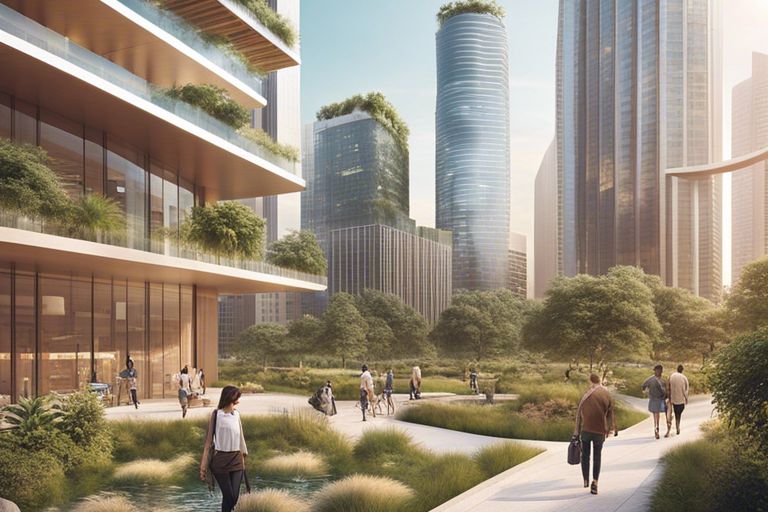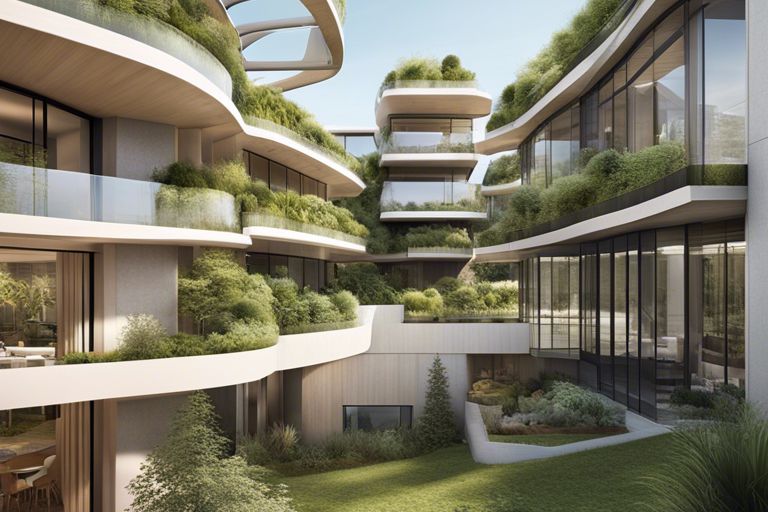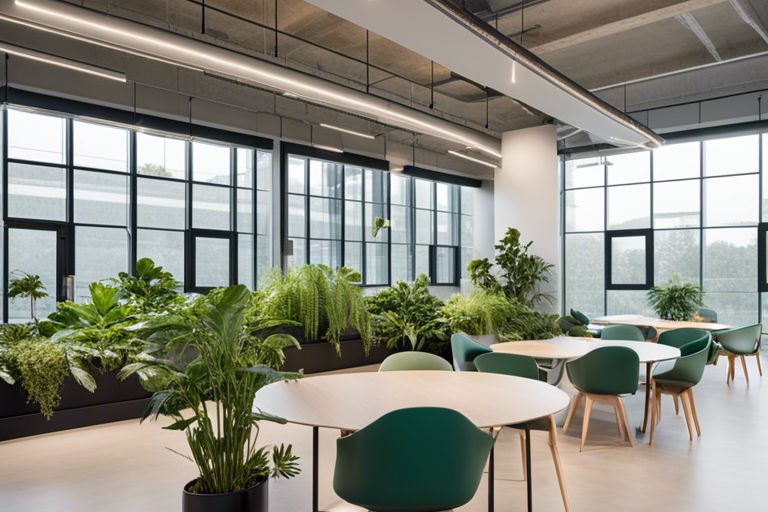Hey there! Are you curious about how the world of architecture is changing and evolving? Well, hold on tight because I'm about to take you on a fascinating journey into the future of architecture. In this how-to guide, we'll explore how AI, or Artificial Intelligence, is revolutionizing design software. Get ready to uncover the secrets behind this groundbreaking technology and discover how it's reshaping the way architects and designers create stunning structures. So, grab your curiosity, and let's dive right in!
Quick Tips
Tip 1: Embrace AI to streamline your design process. By using AI-powered design software, you can save time and effort when creating architectural plans. Let the software assist you by automating repetitive tasks and generating smart design suggestions.
Tip 2: Collaborate with AI to enhance your creativity. Work alongside AI algorithms to explore new design possibilities and push the boundaries of architectural innovation. Allow the software to analyze vast amounts of data and provide insights that can inspire your creative decisions.
Tip 3: Utilize AI to improve efficiency in material selection. AI can help you assess the environmental impact and performance of various building materials, making it easier to choose the most sustainable and suitable options for your projects. Let AI algorithms guide you towards making responsible choices.
Tip 4: Stay on top of AI advancements in architecture. Continuously educate yourself about the latest AI tools and technologies relevant to the field of architecture. This will empower you to harness the full potential of AI and ensure you remain at the forefront of the industry. Keep exploring, experimenting, and embracing the future of AI-driven design in architecture.
Utilize generative design algorithms to explore limitless design possibilities
If you want to explore limitless design possibilities, utilizing generative design algorithms can be a game-changer for you. These algorithms use complex mathematical calculations to create design options based on your input. To get started, you need to have access to generative design software or tools that support these algorithms. There are several options available online, allowing you to experiment and unleash your creativity.
Once you have the necessary software or tools, begin by defining the design parameters. This step is crucial as it sets the boundaries and constraints for the algorithm to work within. For example, if you're designing a chair, you may specify the material, cost considerations, and ergonomic requirements. By providing these inputs, you guide the algorithm towards the type of designs you want to explore.
After defining the parameters, it's time to let the generative design algorithms work their magic. Depending on the complexity of your design, this process may take some time. It's important to be patient and let the algorithm explore various possibilities. The generated designs may vary significantly from your initial expectations, which is part of the beauty of using these algorithms. Take the time to review and analyze the options provided, considering factors such as aesthetics, functionality, and feasibility before making a final decision. Through this iterative process, you can uncover unique design solutions that you may not have imagined otherwise.
How Midjourney is Changing the Future of Architecture? | Midjourney Architecture | AI Architecture
Integrate AI-powered software to optimize building performance and energy efficiency
To integrate AI-powered software and optimize building performance and energy efficiency, you will first need to determine your specific needs and goals. Start by conducting an assessment of your building's current performance and energy consumption levels. Identify areas where improvements can be made, such as HVAC systems, lighting, or insulation. This will allow you to prioritize which aspects of your building you want to focus on optimizing.
Once you have identified the areas for improvement, it's time to select the right AI-powered software. Do some research and find software solutions that are specifically designed for building optimization and energy efficiency. Look for features like real-time monitoring, data analysis capabilities, and machine learning algorithms. These tools will enable you to continuously monitor your building's performance and make data-driven decisions to optimize energy usage.
After selecting the software, it's time to implement and integrate it into your building's systems. Follow the software provider's instructions to install and set up the necessary sensors and equipment. Connect the software to your building's existing systems and make sure they are compatible. Once everything is set up, you can start collecting data and analyzing it through the software's dashboard. Use the insights gained to make operational adjustments and improve energy efficiency.
By following these steps, you can successfully integrate AI-powered software to optimize building performance and energy efficiency. Remember to regularly monitor and analyze the data collected to continually improve the energy efficiency of your building. With the help of AI technology, you can make intelligent and data-driven decisions that will result in significant energy savings and a more sustainable building.
Embrace parametric design tools to create complex and efficient structures
If you're looking to create complex and efficient structures, one tool you should definitely consider is parametric design. With the help of parametric design tools, you can embrace a whole new level of creativity and precision. These tools allow you to define the parameters of your design and let the software do the hard work for you. You can easily make changes and variations to your designs, explore different possibilities, and find the most efficient solution. So, if you want to take your structures to the next level, it's time to embrace parametric design.
When you embrace parametric design, the possibilities are endless. You can easily create intricate structures that would be extremely difficult to achieve using traditional design methods. The parametric design tools not only give you the freedom to experiment but also help you optimize your structures for maximum efficiency. By defining the parameters of your design, such as material usage, load-bearing capacity, or even aesthetic considerations, you can let the software generate the most efficient and structurally sound solutions.
Using parametric design tools doesn't require extensive technical knowledge or expertise. Even if you're just starting out in the field of design, these tools provide a user-friendly interface that allows you to easily manipulate and visualize your designs. You can explore different design iterations, tweak parameters, and see the immediate effects of your changes. This enables you to quickly iterate and find the most optimal solution for your project. So, don't hesitate to embrace parametric design tools and unlock the potential for creating complex and efficient structures.
Apply AI algorithms to streamline repetitive tasks, such as 3D modeling and rendering
If you want to make your 3D modeling and rendering tasks easier and more efficient, applying AI algorithms is the way to go. By harnessing the power of artificial intelligence, you can streamline repetitive tasks and save a significant amount of time and effort. To get started, you need to identify the specific tasks that you find most time-consuming and repetitive in the 3D modeling and rendering process. Once you have pinpointed these tasks, you can begin exploring AI algorithms designed to automate and optimize them.
The next step is to research and select the right AI algorithms for your needs. There are numerous AI algorithms available that can help streamline 3D modeling and rendering tasks. For example, you can use generative adversarial networks (GANs) to automatically generate realistic textures and details for your models. Another powerful algorithm is deep learning, which can be used to automate the process of training your models. By carefully evaluating different algorithms and their capabilities, you can choose the ones that are the most suitable for your specific tasks and goals.
Once you have chosen the AI algorithms that you want to implement, it's time to integrate them into your 3D modeling and rendering workflow. Depending on the complexity of the task and the algorithm, this step may require some technical expertise or assistance. However, many AI algorithms come with user-friendly interfaces and plugins that make integration relatively straightforward. By following the provided instructions and tutorials, you can seamlessly incorporate AI into your workflow and start experiencing the benefits of streamlined and automated 3D modeling and rendering.
Remember, applying AI algorithms to streamline repetitive tasks in 3D modeling and rendering is an ongoing process. As technology advances and new algorithms emerge, it's important to stay updated and continue exploring ways to optimize your workflow. By embracing the power of AI, you can significantly enhance your efficiency and productivity in the world of 3D modeling and rendering. So, don't hesitate to start exploring and implementing AI algorithms today!
Conclusion
With the integration of artificial intelligence (AI) into design software, architecture is undeniably undergoing a transformation. The use of generative design algorithms offers architects unlimited possibilities, pushing the boundaries of creativity and innovation to the limit. Integrating AI-powered software enables architects to optimize building performance and energy efficiency, leading to more sustainable and environmentally-friendly structures. Furthermore, embracing parametric design tools allows for the creation of complex and efficient structures. The significance of these advancements cannot be understated as they have the potential to revolutionize the way we design and build our surroundings. Embracing this future of architecture not only empowers architects to push their creative limits but also enhances our quality of life by creating more sustainable, efficient, and aesthetically pleasing spaces.
FAQ
: AI stands for Artificial Intelligence. It refers to the simulation of human intelligence in machines that are programmed to think, learn, and problem-solve like humans.
Q: How is AI revolutionizing design software in architecture?
A: AI is revolutionizing design software in architecture by automating and streamlining various processes, enabling architects to create more sophisticated designs, improve efficiency, and enhance collaboration.
Q: How does AI improve the design process for architects?
A: AI can analyze vast amounts of data and generate design options based on specific preferences and parameters. It helps architects explore more design possibilities quickly and efficiently, resulting in better-informed design decisions.
Q: Can AI assist architects in generating architectural layouts?
A: Yes, AI can assist architects in generating architectural layouts. By analyzing site conditions, environmental factors, and design constraints, AI algorithms can generate optimized layouts that meet the project requirements.
Q: Does AI provide assistance in concept selection and refinement?
A: Absolutely. AI can assist architects by generating design alternatives based on predefined criteria, allowing them to evaluate and refine concepts more effectively. This saves time and ensures a more efficient decision-making process.
Q: How can AI enhance energy efficiency in architectural design?
A: AI algorithms can analyze various factors such as sun orientation, wind patterns, and energy consumption data to optimize building design for greater energy efficiency. This leads to more sustainable and environmentally friendly architectural solutions.
Q: Can AI help architects in material selection?
A: Yes, AI can assist architects in material selection by considering factors such as structural requirements, cost, durability, and sustainability. AI algorithms can suggest suitable materials, providing architects with valuable recommendations during the design process.
Q: How does AI contribute to the accuracy of cost estimation in architectural projects?
A: AI can analyze historical cost data of similar projects and take into account specific project parameters to generate accurate cost estimations. This helps architects and project stakeholders better plan and manage construction budgets.
Q: Does AI make collaboration among architects and other stakeholders more efficient?
A: Yes, AI facilitates collaboration by creating a centralized platform for architects, engineers, and clients to share and exchange design information in real-time. This streamlines communication and promotes efficient decision-making throughout the project.
Q: What are the potential challenges and concerns with AI in architectural design?
A: Some potential challenges include the need for skilled human oversight to ensure AI-generated designs align with human values, the risk of over-reliance on AI, and the ethical implications of AI-generated designs replacing human creativity.
Q: Is AI expected to replace architects in the future?
A: No, AI is not expected to replace architects. Instead, it will augment their abilities, enabling them to focus more on creativity, innovation, and problem-solving while AI handles repetitive and time-consuming tasks.
Q: How can architects prepare for the adoption of AI in their practice?
A: Architects can prepare for the adoption of AI by familiarizing themselves with AI technologies, staying updated on advancements and best practices, and embracing lifelong learning to adapt to the evolving design industry.
Q: What impact does AI have on the future of architecture?
A: AI has a profound impact on the future of architecture. It empowers architects to harness the potential of technology to create more efficient, sustainable, and innovative designs, ultimately shaping the built environment in a positive way.


